August 12th, 2015
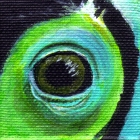
Eye Help Animals Wildlife Eye Keel-Billed Toucan
So you want a green lawn. But at what expense? Too many chemicals used to kill insects can also harm birds and beneficial insects such as bees and butterflies. Not to mention that if you are on well water, or even if you are not, these chemicals can show up in your water causing unforeseen problems down the road.
There are many alternatives to using chemicals that can rid you of unwanted pests without harming others.
Also, avoid bug lights that kill thousands of harmless insects. Instead, invest in a bat house. The bats and birds in your neighborhood will be grateful!
Posted in Take Action | No Comments »
July 23rd, 2015
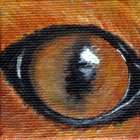
Eye Help Animals Red Fox Wildlife Eye
In a continuing blog of what we can do to help wildlife in our own neighborhood, one very important way you can help is by providing water. We have a pond on our property and I have seen many birds, such as the Great Blue Heron, fishing there from time to time. I’m sure they also take a drink when they need it and so do the other birds that visit as well as deer, fox, and other wildlife we have seen on our property.
I also put out a couple of bird baths that birds will bathe in and also get a drink when needed. One couple, the Phoebes, have nested in the same spot for several years now so we make sure one of the bird baths is close by. We find them sitting on the edge regularly and are happy they call our backyard home.
Posted in Take Action, Uncategorized | No Comments »
June 23rd, 2015

Eye Help Animals Willdlife Eyes Panamanian Golden Frog
In a list of some of the top ways we can help wildlife, a really important one has to do with land ownership. Where we live, we have about 27 acres of land. Of course, a couple are designated for our home and garden area. But the majority of our land is wild with trees and shrubs that the wildlife seems to appreciate. We have nesting birds in our trees as well as in the nesting boxes we provide.
Our first year in our home we spent about 10 hours mowing the land that was part of the “lawn”. After that first year, since I was doing the majority of the mowing, I decided I was no longer going to mow a large tract of the land, which narrowed the mowing time to about 5 hours. And now after 14 years, we hire a young boy in our town to earn a little money when he mows the land we still consider to be lawn. But even that is narrowing as we fill even more of the land with raspberry and blueberry bushes and other flowering bushes to help attract birds and butterflies.
Even a dead tree can provide year-round shelter for a variety of wildlife, from squirrels to several species of birds. They also often feast on the wood-eating insects that infest the tree trunks and branches. We even have a pond on our land, periodically maintained by beavers (we suspect someone is illegally trapping them on our land but we have not caught anyone yet) that is an important breeding habitat for frogs, salamanders, and newts. And sometimes we have a special treat when a Great Blue Heron drops by to fish in the pond.
Posted in Take Action | No Comments »
June 7th, 2015
I just saw a quote on a great website that I thought needed to be shared. “Protect the Planet that Provides”. If we all did that, planet Earth, our one and only planet that provides us with our basic needs of food, water, and shelter, would be in great shape. What can you do to protect our planet? Thank you to Conservation International for your wise yet simple words.
Posted in Take Action | No Comments »
May 26th, 2015
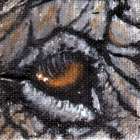
Help Save Endangered Elephants
We all seem to take time when we have a complaint to make to a company about a product, etc. But it is a good idea to also take a few minutes to thank a company when they step up and do the right thing. And one of those companies is Emirates Airline, who, effective immediately, banned the transport of any hunting trophies on flight, which includes animals that ‘aren’t currently threatened with extinction.’
It further said, “This decision is to support international governments, intergovernmental and non-governmental organizations, that are managing wildlife population towards sustaining the task to eliminate illegal trade and transportation of hunting trophies worldwide and saving wildlife heritage.”
‘This announcement comes just weeks after South American Airlines (SAA) announced it would no longer transport trophies from rhinos, elephants, lions, and tigers in an effort to protect wildlife being targeted by sport hunters and the illegal wildlife trade.’ (SAA is another airline who definitely deserves to be thanked for taking the lead in this major decision.)
Of all the airlines in the US, Delta is the only one that has direct flights to South Africa, where many trophy hunters head for illegal killing of endangered animals such as the rhino, elephants, lions, and tigers. Show your support to the airlines that want to protect the endangered animals. And now write those letters of complaint to Delta to get them to make the change, too.
Posted in Take Action | No Comments »
May 12th, 2015

Camouflaged Kitty
I have friends who have cats; some are outdoor cats, some are always indoors. The truth is, cats are predators and love to hunt. So when you let your cat out of the house, it will hunt small birds. In North America alone, the number of birds lost to cats is 500 million a year!
Some people put bells on their cats thinking that will help protect the birds from the predator, your pet cat. But by the time the bird hears the bell, it is too late; the cat is close enough to grab the bird.
As for the cat, it is also in danger of being attacked by larger wildlife such as the raccoon, the weasel, and the fisher, to name a few. There are also any number of diseases that your cat can pick up and injuries from fighting with wildlife that has much longer claws to defend themselves. And then of course, there is the car that cats are often hit by when they run out in the street. A lot of dangers for a little house cat.
If you have a cat, for its safety and the safety of all the native birds in your area, keep it indoors. Give it lots of, and a variety of, toys and it will be entertained for years to come.
“Camouflaged Kitty” painting by DJ Geribo
Posted in Our Thoughts | No Comments »
March 27th, 2015
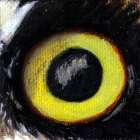
Eye Help Animals Great Horned Owl collectible pin
This is a reminder that tomorrow, March 28, from 8:30 – 9:30pm is Earth Hour. For one hour turn off all electricity in your home. The first year Jim and I did it we read a book out loud by lantern. It was great. We even went beyond the hour. And it was simple to do.
Make a commitment to help save the Earth by shutting off all electricity for one hour. You’ll be amazed at how fast it goes by and at how much it saves our Earth!
Wise Great Horned Owls say “Earth Hour is a great idea!”
Posted in Take Action | No Comments »
March 18th, 2015
It’s that time again, time to help save energy by shutting down electricity in your home for one hour. An event that started in 2007 to raise awareness about climate change, 162 countries and territories now participate. Whether or not you believe in climate change, it is a good thing for our planet to shut off electricity for one hour.
“Earth Hour is an initiative to encourage individuals, businesses and governments around the world to take accountability for their ecological footprint and engage in dialogue and resource exchange that provides real solutions to our environmental challenges.” To find out more about Earth Hour and how you can get more involved in making changes to protect our environment, go to www.earthhour.org.
Posted in Take Action | No Comments »
March 2nd, 2015
March 3rd is World Wildlife Day! The United Nations General Assembly proclaimed March 3 the day of the adoption of the Convention on International Trade in Endangered Species of Wild Fauna and Flora (CITES), to celebrate and raise awareness of the world’s wild flora and fauna.
Read a wonderful article from Huffington Post about Why We Need Wild Animals –
http://www.huffingtonpost.com/paul-rosolie/world-wildlife-day-why-we-need-animals_b_6778636.html
Tags: World Wildlife Day
Posted in News & Boos | No Comments »
February 27th, 2015
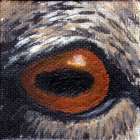
2015 is the Chinese Year of the Sheep
Our apologies for neglecting our Eye Help Animals blog for so long. It has been a busy year, and yes, it has been almost a year since our last blog. But we are back on track and will be working on many changes over the next year.
In our defense, we are still putting out our bi-monthly newsletter. You can subscribe to our Eyes Alive newsletter from our website. And we will be sending out a bi-weekly notice to help bring attention to our goals for EHA and what we are doing to help wildlife around the world. We are also going to feature our products more prominently. The goal is to help raise funds for wildlife reserves and we can only do that by selling products. We hope that you will help support wildlife by supporting Eye Help Animals.
Also, look for our long over-due 3rd collection of wildlife eyes. The theme is Endangered so this group, in particular, needs your support.
Purchase our Eye Help Animals Wildlife Eye collectible pin featuring the Ram.
Posted in Our Thoughts | No Comments »






